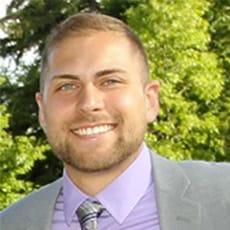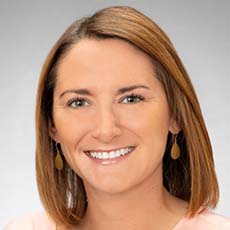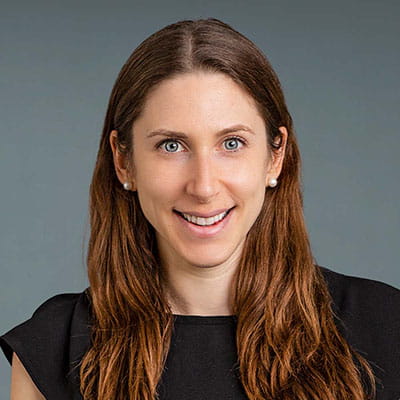The Fellows
The Fellowship Program
Collaborating with scientists and mentors across the five identified centers, these fellows gained incomparable, varied experience through basic, clinical and population research projects to further knowledge about how cardiovascular health uniquely affects women.
In line with the SFRN’s goal of training the next generation of researchers and physician scientists, most of these fellows have chosen to continue their involvement with and investigation of women’s heart conditions. They have published multiple papers, received awards from the AHA and other organizations and given enlightening presentations to scientists and clinicians from across the globe.
Each scholar not only garnered experience but brought their own expertise and areas of interest to the projects, allowing for interdisciplinary progress that continues to be developed. Alisse Hauspurg, MD, for example, built upon her background in obstetrics/gynecology to start a program — which continues to expand — that allows for closer, more long-term monitoring of blood pressure for thousands of women after giving birth. She and several fellows have moved into tenure-track positions; others, such as Anais Hausvater, MD, and Farik Zuraikat, PhD have continued their research with additional fellowships focusing on the same areas they studied through the SFRN.
The unique, comprehensive and collaborative Go Red SFRN opportunity has fortified the strong ongoing clinical and research efforts of each one of its fellows, all of whom are committed to further advancement of women’s cardiovascular medicine.
Here are the stories of five fellows on their experiences:
Columbia University Irving Medical Center
Faris Zuraikat held a long-term interest in human behavior and diet choices, although he didn't initially intend to focus on research.
That changed after he graduated from St. Bonaventure University with an undergraduate degree in psychology and pursued a Ph.D. at the University of Pennsylvania.
Zuraikat has been interested in factors that drive overconsumption of food, including triggers for eating and what people choose to eat.
I was thinking about lifestyle behaviors, and sleep was one that kept coming up, being on a college campus and thinking about sleep deprivation and abnormal sleep times and how that might play into all this,
he said.
He became fascinated by the research being conducted at Columbia and jumped at the chance to apply for the Go Red SFRN Fellowship with its multi-level approach.
Zuraikat principally worked to collect and analyze sleep and lifestyle data from more than 500 women with diverse backgrounds including following up with the women participating at their one-year follow-up appointment.
My role in the AHA Go Red SFRN has been a huge benefit for a variety of reasons,
he said. I was able to develop a lot of new skills. It was my first exposure to observational research in a community-based cohort. It was my first exposure to sleep research in a clinical trial setting, as well. I have really benefited from working with my mentors.
I've gained a lot of research skills, knowledge and even greater appreciation for women's health and the importance of studying determinants of health behaviors in women and consequences of those behaviors.
During his fellowship, he traveled to the University of California, San Diego to present to the SFRN team studying sedentary lifestyle modifications in older women. The two centers co-authored a paper on the influence of mealtimes on cardiometabolic health.
By collaborating with other people from different fields and different spaces, you're able to bridge the gap between your work and theirs, and it brings up things that one might not have thought of,
Zuraikat said. I think that collaboration is hugely important to advancing science, and it's really nice that this network promoted collaboration both within the institutions and across institutions.
The focus on women's health is especially important, he said, and it amplified his interests in the area. A lot of science has focused on men, but there are really those psychosocial and biologic differences in men and women that may cause women to have different risks for adverse health outcomes,
he said.
Following the AHA-funded fellowship, Zuraikat was awarded a Russell Berrie Foundation Fellowship in diabetes research at Columbia, securing funding for two years to primarily focus on obesity and diabetes in night-shift workers.
John Hopkins University
After she finished her undergraduate studies at Harvard University and medical school at Johns Hopkins University, the Go Red SFRN fellowship attracted Wendy Ying, M.D.
The SFRN fellowship seemed very education-centered — like it placed a big focus on not just the completion of the end point, but also making sure the trainee received a lot of exposure to mentors, as well as professional development and training,
she said.
Her goal was to become a clinical cardiologist, and the Johns Hopkins investigation into one of the more challenging questions surrounding heart failure both intrigued and challenged her.
Interestingly, we actually have a lot of medications and understanding for the other type of heart failure, which is when your heart doesn't squeeze normally enough. Heart failure with reduced ejection fraction was for the longest time the only type of heart failure that was known,
she said.
So, researching heart failure with preserved ejection fraction, or HFpEF, offered her a chance to truly further the understanding and treatment of a different type of heart failure that has fascinated
cardiologists for years.
Ying was involved in both the population and clinical projects, which helped her “improve the understanding of research in both disciplines.”
As part of the clinical project, she assisted in cardiac MRIs and analyzing the images to determine tissue types and gender-based differences in fat and cardiovascular disease.
We looked at fat around the heart and in the liver, and then we also looked at fat in the muscle,
she said, adding: We know that having overall fat and being obese is one of the main predisposing factors to having HFpEF. But there's been a lot of research recently that it&apos's not just that your weight is high – it's that, if you have specific fat in specific areas of the body, certain areas might be more predisposed to HFpEF.
She and other researchers also did echocardiograms on participating patients at rest and while exercising to gauge changes in heart function.
We wanted to see, do men and women have different changes during exercise? And is it that certain markers on the echo change and certain markers don't change? And — in having other diseases that are associated with HFpEF, for example being overweight or having diabetes or high blood pressure — do they, in part, form an exercise intolerance? Do men and women differ in how much they're able to exercise, or how much the heart changes during exercise?
Using data from her fellowship, Ying published a dozen papers — some co-authored with other SFRN fellows — and gave almost the same number of presentations of her research. She continues her training and research as a cardiology fellow at Johns Hopkins and said the SFRN has proven invaluable to her career, particularly when it comes to diversified research experience.
I got a lot of training in terms of having the opportunity
she said, I think, being able to form a network of all these mentors I suddenly had, from day one of this fellowship, was really helpful.
Equally beneficial, she said, was meeting people from different institutions who could help in a collaborative effort with projects and moving forward toward our shared goal of seeking knowledge and improving care.
Magee-Womens Research Institute
With a background in obstetrics and gynecology, Alisse Hauspurg, M.D., took a relatively unusual route to the Go Red SFRN fellowship.
Traditionally, the funding and the opportunities that are available to a resident or a fellow within obstetrics and gynecology are from the American College of Obstetricians and Gynecologists or funding sources that are specific to OBGYN,
she said. The AHA is not a traditional track that people who finish OBGYN residencies would find.
Hauspurg — who majored in biology with a minor in sociology at the University of Pennsylvania and graduated from Yale Medical School and completed her residency at Brown University — had already been awarded a fellowship in maternal fetal medicine at the University of Pittsburgh when she heard about the Go Red SFRN opportunity. Since it perfectly aligned with her interests, she decided to pursue both.
There's so much about pregnancy and about the pathologies that develop during it that we just don't understand,
she said. I felt like it was an area that really had a lot of unanswered questions that I was interested in.
Both the science and the interpersonal sides spurred her interests, noting that women are the family caretakers, but may not prioritize their own health.
Hauspurg developed a particular interest in the transition from having a hypertensive disorder during pregnancy to longer-term cardiovascular risk and the persistence of hypertension afterward. In my role as a maternal fetal medicine fellow, I was very much enmeshed in the functioning of labor and delivery,
she said. I became particularly interested in new-onset postpartum pre-eclampsia, which is an extremely understudied disease entity. We added that cohort of women as one of our groups that we recruited, either at the time of diagnosis or a subset of them that we recruited a year postpartum.
Hauspurg finished both fellowships in 2019 and received a NIH Building Interdisciplinary Research Careers in Women's Health (BIRCWH) Career Development Award and was appointed to Assistant Professor tenured track at University of Pittsburgh in OBGYN and Reproductive Sciences.
Building on her work she began during the SFRN fellowship, she collaborated with a cardiology colleague to develop a multidisciplinary clinic for women with hypertensive disorders, enrolling 3,000 women so far and sending them home after birth with blood pressure cuffs.
The opportunity to start asking those questions, to think about working in a multidisciplinary space, really was born out of me doing the AHA fellowship,
she said, adding that it opened doors that might have been inaccessible as an obstetrician.
The opportunity to collaborate within a multidisciplinary research environment was really invaluable in helping me to think about some of the research questions that I wanted to answer such as how to care for the patient population that I'm specifically interested in — and gave me fantastic mentors.
New York University School of Medicine
Growing up with a sister who had congenital heart disease, Anais Hausvater became fascinated by cardiology at an early age. She went on to become the first doctor in her family.
As she completed medical school at McGill University and her residency at Tufts Medical Center, Hausvater also became more resolute that she didn't want to be a doctor who just treats patients; I also wanted to be advancing the science.
So, the SFRN opportunity to study with NYU Center Director Harmony Reynolds, M.D. seemed like a perfect fit, combining her interest in research with her dedication to women's cardiovascular health. She was involved in all three projects of the center — basic, clinical and population — to further knowledge about female heart attack patients presenting with open arteries.
I had encountered these patients already in residency, and I've continued to encounter them in fellowship,
Hausvater said. Oftentimes they are women who have all the presenting signs and symptoms of a heart attack, and they are sent to the cath lab, which is standard care.They're found to have open arteries, but I kept seeing that most of the time, they were told that they did not have a heart attack.
She added: I was finding a lot of patients who were asking me,
Well, what happened? I don't understand.
And we really didn't have the answers.
Hausvater joined researchers in using advanced imaging technology which assisted to get tests done on patients sooner for more accurate results — to answer those questions, informing treatment and better educating doctors.
I had the opportunity to use a lot of our data to create abstracts, and I went to every American Heart Association conference as well as the American College of Cardiology,
Hausvater said. And I had the opportunity to present at both of those each year using our data.
She's continuing her research right now, still alongside Reynolds, as a second-year cardiology fellow at NYU Langone Health.
For me, the absolute best part of the research fellowship was the mentorship that I got,
she said, adding that she tells potential candidates, that mentorship in medicine is one of the most valuable things you can have, especially as a woman in medicine.
University of California, San Diego
As a psychology major at California State University, Long Beach, Melawhy Garcia decided to take a Latino health class as an elective, but she fell in love with public health. She went on to pursue a masters in the field and, after hands-on internships and a decision to earn her Ph.D., heard about the AHA SFRN fellowship.
It was the perfect fit for me,
Garcia said. She already had worked with South Bay Latino Center, which was collaborating with University of California, San Diego to study the effect of sedentary lifestyles on the cardiovascular health of Latina women.
Before securing the fellowship, Garcia said, I worked on other studies looking at Latino obesity, and I saw how those high rates really can lead to heart-health issues.
She had an integral role in the population study, helping to craft and research questionnaires, analyze data and tailor the project to the targeted community, which was largely unaware of the negative effects associated with lack of exercise.
It has to start with awareness,
she said. There was no questionnaire related to sedentary knowledge available to us when we started the study.
Convincing women to participate, she said, was helped by the fact that they were being recruited by an established research center like the South Bay Latino Center, with culturally competent staff and bilingual research assistants.
Study results shed light on how to encourage women to be more active within and outside their homes, she said. There were significant findings related to the neighborhood environment; women who perceived that their neighborhoods were safe were less likely to have high rates of sedentary time,
she said. There is more work that can be done around promotion of places to walk and support for increases in activity among older Latina women.
Since 2017, Garcia has presented at several AHA and other conferences, authored five papers, co-authored five more and currently has two manuscripts under review.
Now an assistant professor at California State University, Long Beach, she is pursuing research through two grants from the U.S. Department of Agriculture, primarily focusing on combating childhood obesity within the Latino community and has received about $1.4 million in funding.
Grants and opportunities from organizations such as the AHA, she said, increase interest both in community health and also in training individuals that are first-generation college graduates like myself.
Jan. 1, Jan. 19, May 25, July 3,
Sept. 7, Nov. 26 & 27, Dec. 21-25
2026 Altum/ProposalCentral holidays:
Jan. 1, Jan. 19, Feb. 16, May 25, June 19, July 3
Sept. 7, Oct. 12, Nov. 26 & 27, Dec. 28-Jan 1




